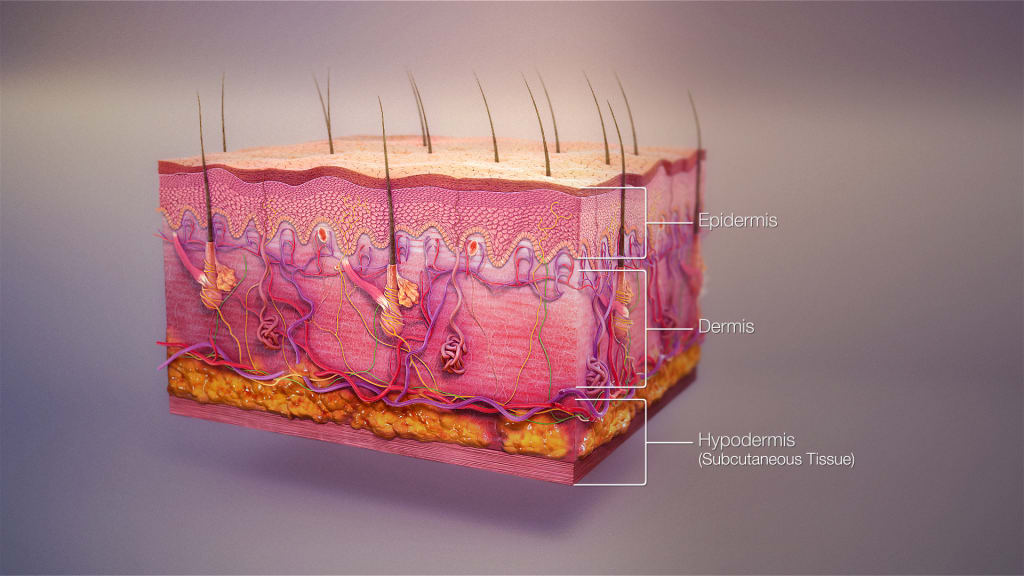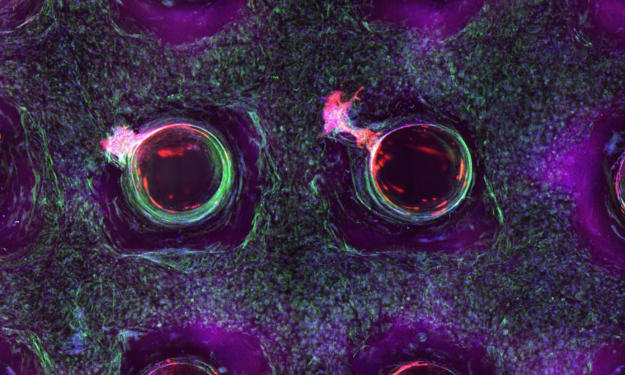What about SKIN ?
The Remarkable Complexity of Your Skin: A Closer Look at the Body's Largest Organ

Title: The Remarkable Complexity of Your Skin: A Closer Look at the Body's Largest Organ
Introduction
When we think of organs, we often imagine the heart, liver, or lungs. However, we tend to overlook the largest organ of all—our skin. Beyond its external appearance, the skin serves crucial functions, such as protection, temperature regulation, fluid balance, and even vitamin D synthesis. Composed of three layers—the epidermis, dermis, and hypodermis—each with its own unique set of cells, the skin is a remarkable organ that deserves recognition and understanding.
The Skin's Multifaceted Role
The skin acts as a barrier, shielding our body from infections and extreme temperatures. It is a sensory organ, with numerous nerve endings allowing us to perceive the outside world. Through sweat glands and blood vessels, the skin helps regulate body temperature and communicates physiological and emotional states, manifesting as blushing, flushing, or sweating. Additionally, the skin contributes to our identity, accounting for a significant portion of our body weight and offering a canvas for self-expression through tattoos.
Layers of the Skin
The skin comprises three layers: the epidermis, dermis, and hypodermis. The epidermis, the visible outer layer, consists of stratified squamous epithelial tissue and is constantly replenished by keratinocyte cells that produce keratin, a protein responsible for strength and waterproofing. The melanocyte cells within the epidermis synthesize melanin, determining our skin color.
Beneath the epidermis lies the dermis, where the majority of skin functions occur. It facilitates sweating, blood circulation, and sensory perception through nerve endings. Composed of two layers—the papillary layer and the reticular layer—the dermis provides structural support with collagen and elastin fibers.
The deepest layer, the hypodermis, primarily consists of adipose tissue, offering insulation, energy storage, and shock absorption.
Skin Damage and Healing
Skin damage can have serious consequences, especially when it extends into the dermis. The dermis houses blood vessels, nerve fibers, hair follicles, and oil and sweat glands, making it crucial for skin function. Injuries that breach the dermis can lead to complications and require prompt attention.
The skin has an impressive ability to heal itself. Through cell regeneration, new cells are produced in the basal layer of the epidermis and gradually migrate toward the surface. The process of shedding old cells and generating new ones allows the skin to maintain its protective function.
Sun Protection and Skin Health
Exposure to ultraviolet (UV) radiation from the sun can cause damage to the skin. Over time, this can lead to premature aging, including the clumping of elastic fibers and increased risk of skin cancer. Adequate sun protection is vital to maintain skin health.
While the skin's melanin provides some natural protection against UV radiation, it is essential to apply sunscreen to further shield the skin. Sunburn not only damages the skin but also temporarily weakens the immune system.
Conclusion
Our skin is an extraordinary organ, often underappreciated for its vital functions. It serves as a protective shield, regulates body temperature, and allows us to interact with the world through sensation. Understanding the structure and role of the skin's layers—the epidermis, dermis, and hypodermis—enhances our appreciation for its complexity.
Taking care of our skin through proper sun protection, hydration, and general skincare practices is essential for maintaining its health and longevity. By recognizing the remarkable capabilities of our skin, we can foster a deeper understanding of this incredible organ that plays a crucial role in our overall well-being.





Comments
There are no comments for this story
Be the first to respond and start the conversation.